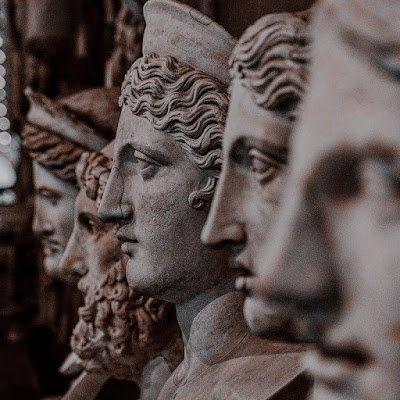In my previous post, I showed how monotheism conflicts with what we find in reality. Therefore, the claim of the existence of a One True omnipotent, omniscient, and omnibenevolent God is proven false. However, if we stopped there, we would be atheists. While I’ve never found a satisfying argument from logic for divinity, I believe it exists. However, I base this belief primarily on personal experience and nothing more.
Working on the assumption of the existence of divinity, I, along with most contemporary Pagans, contend that divinity is best conceived in multiplicity, at least on the level humans can interact with it, rather than unity. The term for divinity as multiplicity is polytheism.
 |
| Statues of gods from the Greek pantheon |
Argument from Nature
Contemporary Paganism is often described as a “nature religion.” Such a term carries many implications. One implication is that we look to the world around us for assistance in great metaphysical questions. Known as the Hermetic Principle, this is often summarized as “As above, so below.” The Hermetic Principle, therefore, states that the natural world can assist us in understanding divinity.
The natural world is awash with multiplicity and diversity. Our sun, for example, is only one star out of 100 thousand million stars in the Milky Way galaxy alone. And there are over 20 trillion galaxies in the observable universe. All of the stars differ from each other. There are red dwarfs, white dwarfs, blue giants, yellow mainstream stars like ours, and many more. Observations show that most stars have at least one planet and that each of these exoplanets is unique. In all of the observable universe, random chance dictates that life most likely evolved on at least one planet other than our own. Indeed, the biology of each exoplanet would itself be just as distinctive as the planet.
Just as multiplicity and diversity are found throughout the Cosmos, the same goes for life on Earth. It’s estimated that around 8.7 million species of plants and animals exist. And within each species is a fantastic display of diversity. Darwin’s famous observation of the beaks of finches is an excellent example of the differences that can occur within a species.
In Shinto, it is said that there are eight-million kami, or divine beings. Eight million is a symbolic number which means it’s impossible to count. This saying isn’t surprising since Shinto, an indigenous religion of Japan, is very much nature-based.
Just as we find enormous diversity and multiplicity on Earth and in the Cosmos, we should expect the same with divinity. Divinity must be understood in multiplicity and diversity.




No comments:
Post a Comment